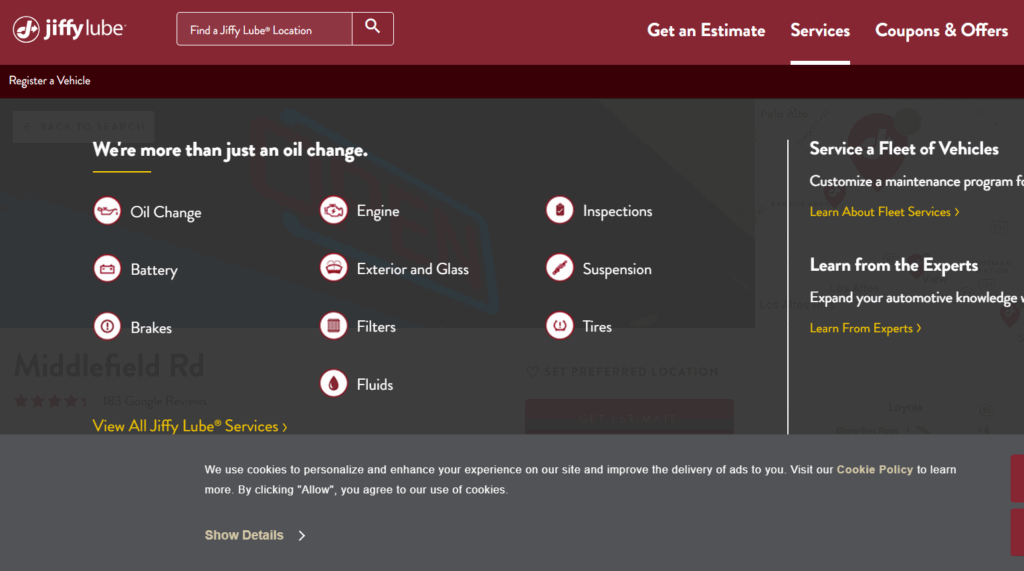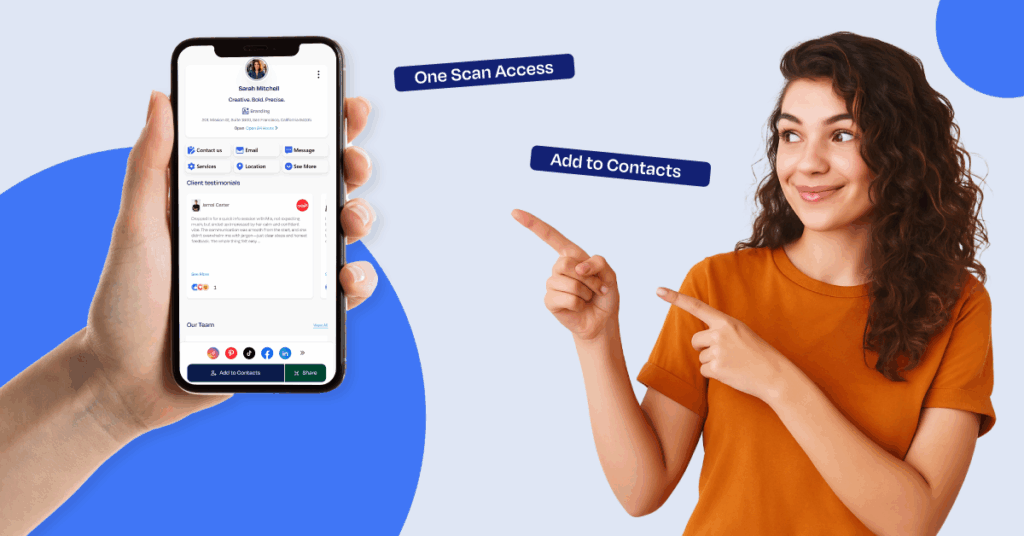Here’s something that might surprise you:
According to Think with Google, 76% of people who search for something nearby visit a related business within 24 hours. Yet most garage owners I meet are practically invisible on Google.
I’ve helped auto repair businesses across the world dominate their local search results for over a decade. And here’s what I’ve discovered:
Your potential customers are searching for your services right now. They’re typing “brake repair near me” while sitting in broken-down cars.
But if your shop doesn’t show up in those results, they’ll drive straight to your competitor.
The good news? Most auto repair shops still don’t understand local SEO for auto repair shops properly. That gives you a massive advantage.
In this guide, I’ll share the exact strategies that help garage owners increase their online visibility and attract more local customers.
Why Local SEO is Important for Auto Repair Shops?
After helping hundreds of auto repair businesses build their online presence, I can tell you this with certainty:
Local SEO isn’t just nice to have for your shop – it’s absolutely critical for survival.
Here’s why:
1. Your customers search locally first: When someone’s car breaks down or needs maintenance, they don’t browse through Yellow Pages anymore. They grab their phone and search for “auto repair near me” or “mechanic shop close by.” Google processes over 60,500 searches for auto repair shops every single month in the US alone.
But here’s the thing that shocked me when I first started working with automotive businesses:
2. Most people never scroll past the first three results: Research shows that 68% of all clicks go to the top three search results on Google’s first page. If your auto repair shop isn’t showing up there, you’re essentially invisible to potential customers.
3. Mobile searches drive immediate action: Unlike other industries where people might research for weeks, automotive searches are urgent. When customers search on mobile devices for car repairs, they need help now. These aren’t window shoppers – they’re ready to call and book an appointment today.
4. Trust starts online: Before customers visit your shop, they’re checking your Google reviews, looking at photos of your work, and comparing you to other local competitors. Your online presence directly impacts whether people trust your auto repair business enough to bring you, their vehicle.
5. Local customers become repeat customers: When you rank well for local searches, you’re not just getting one-time visitors. You’re building relationships with people in your community who will return for regular maintenance and refer their friends and family.
Key Search Terms Customers Use to Find Auto Repair Shops Nearby
Here are some of the most common and important target keywords I see driving traffic to auto repair businesses:
| S no | Keywords | Search Intent |
| 1 | auto repair near me | Local service discovery |
| 2 | mechanic near me | Immediate service need |
| 3 | car repair shop near me | Local business search |
| 4 | brake repair near me | Specific service + location |
| 5 | oil change near me | Routine maintenance local |
| 6 | transmission repair near me | Specialized service local |
| 7 | 24 hour mechanic near me | Emergency service need |
| 8 | auto body shop near me | Collision repair local |
| 9 | car ac repair near me | Seasonal service local |
| 10 | mobile mechanic near me | Convenience-focused service |
Now, you let’s look at how you can get started with local SEO for your automotive store.
6 Steps to Do Local SEO for Auto Repair Shops
After implementing local search optimization for automotive businesses across different markets, I’ve developed a proven system that works every time. Let me walk you through the exact process I use to help garage owners dominate their local search results.
Here’s the step-by-step approach that’s helped auto repair businesses increase their visibility and attract more local customers:
Step 1: Claim and Optimize Your Google Business Profile
This is your digital storefront, and it’s absolutely critical to get it right.
Start with the basics:
- Claim your Google Business Profile if you haven’t already
- Choose “Auto repair shop” as your primary category
- Add secondary categories like “Brake shop,” “Transmission shop,” or “Oil change service” based on your specialties
Here’s what most automotive businesses get wrong:
They fill out the basic information and think they’re done. But Google gives you so much more space to showcase your business.
Add your service hours carefully:
If you offer emergency services, make sure to list those hours separately. Many potential customers search for “24 hour mechanic” during off-hours.
Upload high-quality photos:
I recommend at least 10-15 photos showing:
- Your shop exterior and interior
- Your team at work
- Before and after repair photos
- Clean, organized workspace shots
Take a look at how Jiffy Lube optimizes their profiles – they consistently show clean facilities, professional staff, and clear service bay photos that build trust before customers even visit.

Write a compelling business description:
Use this space to naturally mention your target keywords while explaining what makes your auto repair business special.
Read more: How to optimize your Google Business Profile
Step 2: Find and Add Relevant Keywords
Keyword research is where most automotive SEO strategies either succeed or fail.
Start with your core services:
- List every service you offer (brake repair, oil changes, transmission work, etc.)
- Add location modifiers to each service (“brake repair in [your city]”)
- Include emergency variations (“24 hour brake repair,” “emergency transmission service”)
Use free tools to expand your list:
- Google Keyword Planner shows you search volumes
- Google Search Console reveals what people already find you for
- Simply type your services into Google and see what auto-complete suggests

Think like your customer’s search:
Don’t just focus on technical terms. Real people search for “my car won’t start” more than “automotive diagnostic services.”
Create separate pages for each service:

This is crucial for your optimization efforts to work properly. Instead of lumping everything on one “Services” page, create individual pages for:
- Brake repair services
- Oil change and maintenance
- Transmission repair
- Engine diagnostics
- Emergency roadside assistance
Each page can target specific relevant keywords and rank independently in search results.
Step 3: Optimize Your Website for Mobile
Here’s a reality check: Most of your customers will find you on mobile devices, especially during emergencies.
Make your contact information impossible to miss:
- Put your phone number at the top of every page
- Use click-to-call buttons that work on mobile
- Display your address clearly for GPS navigation
Speed matters more than you think:
When someone’s car breaks down, they won’t wait 10 seconds for your website to load. They’ll hit the back button and call your competitor instead.
Simple steps to improve mobile experience:
- Test your site on your own phone regularly
- Make sure buttons are easy to tap
- Keep forms short and simple
- Use Google Search Console to check for mobile usability issues
Optimize for local search behavior:
Mobile users often search while they’re already in their car or at work. Make it easy for them to get directions, call you, or book an appointment without typing lengthy forms.
Step 4: Collect Reviews from Customers
Reviews are the lifeblood of local search optimization for automotive shops. They build trust and signal to Google that you’re a legitimate, quality business. However, getting reviews is the most difficult task any small business faces.
Thats why businesses use review collecting tools. Krofile is a review collection platform that helps streamline collecting reviews from key platforms like Google Business Profile (GBP), Yelp, Facebook, TripAdvisor, and Yellow Pages. This makes it easier to boost your online presence and build trust with new customers.

Make asking for reviews part of your process:
- Ask satisfied customers in person after completing their service
- Send follow-up text messages with direct links to your Google review page
- Include review requests in email receipts
Respond to every review – positive and negative:
This shows potential customers that you care about their experience. Keep responses professional and helpful.
Here’s my proven review response formula:
- Thank them for their feedback
- Address their specific concern (if negative)
- Invite them to discuss privately if needed
- Show other potential customers how you handle issues
Don’t panic about negative reviews. Every auto repair shop gets them. What matters is how you respond and improve. Often, a thoughtful response to a negative review builds more trust than a dozen generic positive ones.”
Step 5: Create Content for Your Local Audience
Content creation is where you establish authority and capture people search at different stages of their customer journey.
Focus on seasonal automotive content:
- “Preparing Your Car for Winter in [Your City]”
- “Summer AC Maintenance Tips”
- “Why Your Car Won’t Start in Cold Weather”
Answer common customer questions:
- “How Long Should Brake Pads Last?”
- “Signs Your Transmission Needs Repair”
- “When to Replace vs. Repair Your Car Battery”
Create location-specific blog posts:
Write about local driving conditions, road construction affecting your area, or car care tips specific to your climate. This helps you rank for local searches while providing genuine value.
Look at how Valvoline Instant Oil Change creates content – they regularly publish helpful maintenance tips and seasonal advice that positions them as automotive experts while naturally targeting search terms their customers use.

Don’t forget about social media:
Share quick tips, customer success stories, and behind-the-scenes content. Social platforms don’t directly impact search rankings, but they build relationships with local customers.
Step 6: Add Your Business to Local Citations
Citations are mentions of your business name, address, and phone number across the web. They’re crucial for local search rankings.
Start with the major directories:
- Google Business Profile (already done in Step 1)
- Bing Places for Business
- Apple Maps
- Yelp
Target automotive-specific directories:
- RepairPal
- Angie’s List
- Better Business Bureau
- Local chamber of commerce websites
Keep your information consistent everywhere:
This is critical. Make sure your business name, address, and phone number match exactly across all platforms. Even small differences can hurt your local search rankings.
Build relationships for natural link building:
- Partner with local parts suppliers
- Sponsor community events
- Join local business associations
- Collaborate with other non-competing local businesses
The key to success? Implement these steps systematically, one at a time. Don’t try to do everything at once. Start with your Google Business Profile, then move through each step methodically.
Most auto repair shops that follow this process see improvements in their local search visibility within 30-60 days.
Now that you have the foundational steps in place, let me share the advanced practices that separate successful automotive businesses from those struggling to get noticed online.
5 Best Local SEO Practices for Auto Repair Shops
1. Optimize for Emergency Searches
Car problems don’t follow business hours. Create dedicated pages for “24-hour emergency repair” and update your Google Business Profile with after-hours contact information. Target urgent keywords like “car won’t start” and “emergency mechanic near me.”
2. Leverage Seasonal Maintenance Cycles
Customer searches follow predictable patterns. Build content calendars around seasonal needs – winter prep content in fall, AC repair pages before summer. This captures customers before they need services.
3. Build Trust Through Transparency
Display ASE certifications prominently and showcase warranties clearly. Use customer testimonials mentioning specific problems solved. Trust drives more conversions than ranking position in automotive services.
4. Create Service Area Pages
Don’t just optimize your exact address. Build dedicated pages for each city you serve with location-specific content about local driving conditions. Target “[Service] in [Nearby City]” variations.
5. Track Phone Calls Properly
Most automotive customers call rather than fill forms. Implement call tracking numbers and monitor which keywords drive calls. Train staff to ask “How did you find us?” consistently.
These practices go beyond basic optimization – they meet customers exactly where they are in their search journey.
Get Started with Local SEO Today
Here’s the truth: Your competitors are already implementing these strategies while you’re reading this guide. The automotive businesses that dominate local search results didn’t get there by accident—they followed a proven system.
Start by optimizing your Google Business Profile, then move to mobile optimization. You don’t need to do it all at once.
With tools like Krofile, you can streamline the process, collect reviews, and enhance your online presence. Take advantage of Krofile’s 30-day free trial and see the results for yourself.

Your local customers are searching for you right now. Make sure they find you first.”







